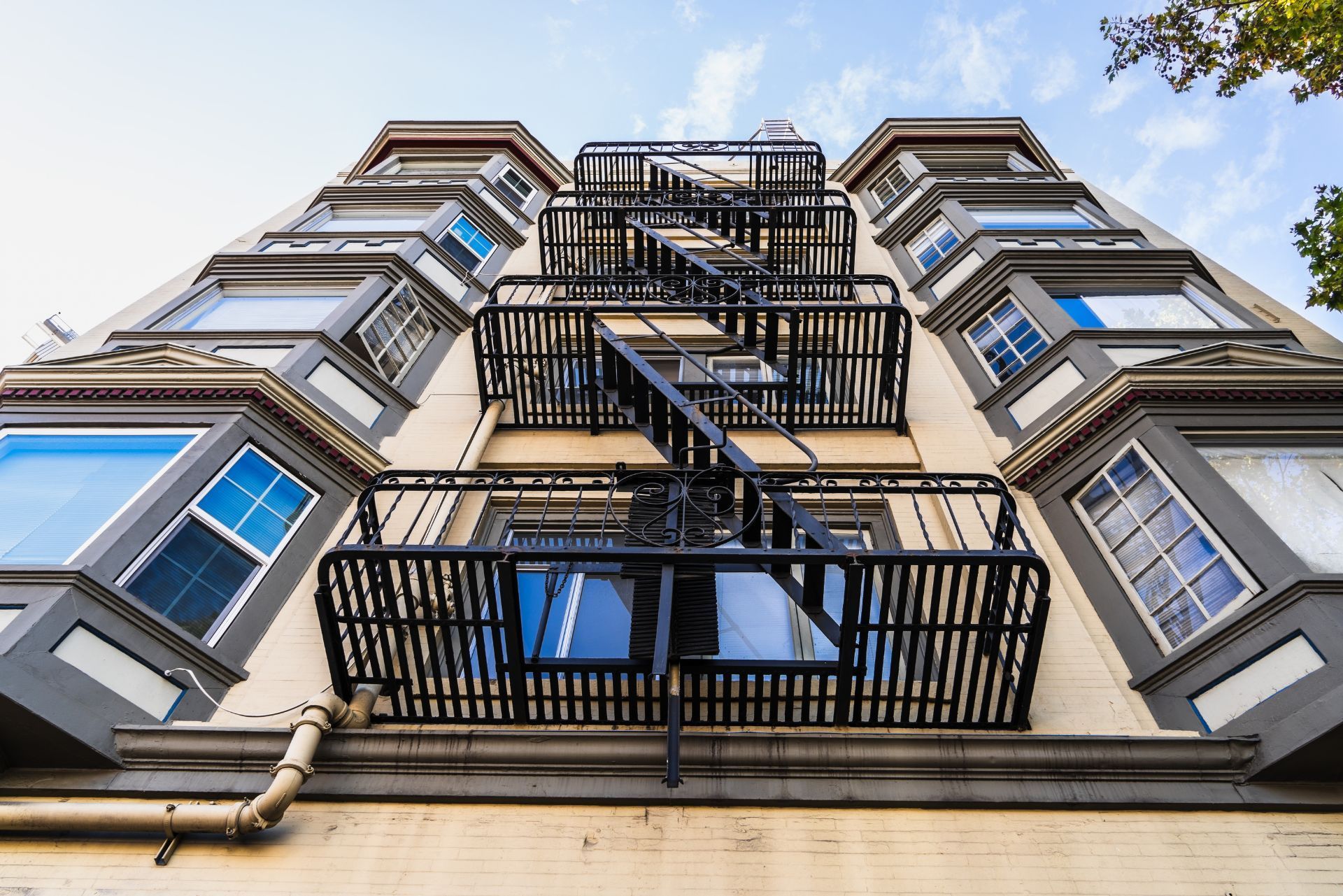Minnesota Apartment Building Insurance

See How We're Different
or call us: (763) 242-1668
Common Business Insurance Policies
By: Matt Larsen
Owner of Capstone Insurance Group & Restaurant Insurance Advisor
763-242-1668
Index
Contact Us
Owning and managing apartment buildings in Minnesota comes with a unique set of challenges, especially when it comes to insurance. With rising premiums and changing market dynamics, understanding the landscape of apartment building insurance in the state is crucial for property owners and investors alike. This comprehensive guide will walk you through everything you need to know about insurance costs, market trends, and strategies to protect your investment effectively.
Recent reports indicate that
property insurance premiums for apartment owners in Minnesota and neighboring states have surged by an average of 45% between 2021 and 2024, highlighting a significant shift in the insurance market. For those interested in the broader regional context, the
Federal Reserve Bank of Minneapolis provides an insightful analysis on these trends.
Current Insurance Premium Trends in Minnesota
Insurance premiums for apartment buildings in Minnesota have seen sharp increases in recent years. Between 2021 and 2024, the average property insurance premium for apartment owners in Minnesota, Montana, North Dakota, and South Dakota rose by approximately 45%. This surge reflects broader challenges in the insurance industry, including increased claims, inflationary pressures, and risk reassessments by insurers.
Homeowners are also feeling the pinch. Minnesota home insurance premiums are projected to rise by 15% in 2025, pushing the average monthly premium from $294 in 2024 to $338. This increase is indicative of a tightening insurance market statewide, which inevitably impacts multifamily housing as well.
Auto insurance rates have experienced even more dramatic hikes. Minnesota saw a staggering 55% year-over-year increase in auto insurance rates through June 2024, the highest in the nation. While this directly affects vehicle owners, it also signals an overall trend of rising insurance costs across multiple sectors in the state. For a detailed look at these increases, Insurify’s report offers valuable insights.
Why Are Premiums Rising?
Several factors contribute to the rising insurance premiums for apartment buildings in Minnesota:
- Increased Claims and Losses: Natural disasters, fire incidents, and liability claims have increased, leading insurers to raise premiums to cover potential payouts.
- Inflation and Construction Costs: The cost to repair or rebuild properties has surged, pushing insurers to adjust premiums accordingly.
- Risk Reassessment: Insurers are becoming more cautious, especially about older buildings, which are often more prone to damage and claims.
Additionally, the changing climate has introduced new risks that insurers must account for, such as flooding and severe storms, which are becoming more frequent and intense. This environmental shift not only affects the underwriting process but also leads to a reevaluation of coverage options. Insurers are increasingly incorporating climate risk models into their assessments, which can further drive up costs as they seek to mitigate potential losses. As a result, property owners may find themselves facing higher premiums or stricter coverage terms, particularly in areas deemed high-risk.
Moreover, the competitive landscape of the insurance market is shifting. With some insurers pulling back from certain segments, fewer options are available for property owners. This consolidation can lead to less competitive pricing, as remaining insurers may not feel the pressure to keep premiums low. In this environment, property owners are encouraged to shop around and explore different policies, as the right coverage can make a significant difference in managing costs amidst these rising trends.

Impact of Building Age and Quality on Insurance
One of the most significant factors influencing insurance costs for apartment buildings in Minnesota is the age and quality of the property. Approximately 28% of rental housing properties in Greater Minnesota were built prior to 1960, compared to 24% in the Twin Cities metro area. Older buildings generally carry higher risks due to outdated electrical systems, plumbing, and structural components, which can lead to increased claims.
This trend has caused insurance companies to become more selective. Many insurers now focus on newer, "high-quality, lower-risk assets" in the Twin Cities metro, often avoiding or charging higher premiums for older apartment buildings. This shift is documented in reports by Michel Commercial Real Estate, which highlight how insurance costs can influence property investment decisions.
Challenges for Owners of Older Buildings
Owners of older apartment buildings face several challenges:
- Higher Premiums: Insurers price in the increased risk of claims from older infrastructure.
- Limited Insurance Options: Some companies have stopped writing personal lines or certain types of property insurance, focusing instead on commercial policies with lower risk profiles.
- Potential for Coverage Gaps: Older buildings may have exclusions or limited coverage for certain risks, requiring owners to seek additional endorsements or specialized policies.
In addition to these challenges, owners of older buildings often grapple with the need for costly renovations to meet modern safety standards. Upgrading fire safety systems, installing energy-efficient windows, and modernizing heating and cooling systems can be significant financial burdens. These renovations not only enhance the safety and livability of the property but can also positively influence insurance premiums in the long run. However, the upfront costs can deter many owners from making necessary improvements, leaving them in a cycle of high insurance costs and potential liabilities.
Furthermore, the historical significance of many older buildings can complicate renovation efforts. Owners may face restrictions from local preservation societies or historical commissions, which can limit the extent of modifications they can make. This balancing act between maintaining the building's character and ensuring it meets current safety standards can be daunting. As a result, property owners must navigate a complex landscape of regulations and financial pressures, all while striving to provide safe and affordable housing for their tenants.
Insurance Market Shifts and Their Effects
The insurance market in Minnesota is undergoing notable changes that affect apartment building owners. Some insurance companies have stopped writing personal lines altogether, choosing instead to focus solely on commercial policies. This shift reflects a lack of profitability in the personal line space and a growing emphasis on managing risk more carefully.
For apartment owners, this means increased scrutiny when applying for insurance and potentially fewer options. The market's cautious stance has led to more attention on newer, well-maintained properties that present lower risk to insurers. These dynamics can influence investment strategies, pushing developers and owners toward constructing or upgrading to higher-quality multifamily properties. As a result, the landscape is becoming increasingly competitive, with property owners needing to differentiate their offerings to attract both tenants and favorable insurance terms.
More details on these market changes and their implications can be found in the analysis by APRO Development.
What This Means for Apartment Owners
Apartment owners should be proactive in managing their insurance risks by:
- Investing in property upgrades to reduce risk and appeal to insurers.
- Working with insurance brokers who understand the evolving market.
- Exploring multiple insurance carriers to find the best coverage and rates.
Additionally, owners might consider implementing risk management strategies such as regular property inspections and maintenance schedules. By demonstrating a commitment to property upkeep, owners can not only enhance tenant satisfaction but also present a stronger case to insurers. Furthermore, engaging with local real estate associations can provide valuable insights and networking opportunities, allowing owners to stay informed about market trends and best practices in risk mitigation.
Another crucial aspect to consider is the impact of technology on the insurance landscape. Many insurers are now utilizing data analytics and smart technology to assess risk more accurately. This trend means that apartment owners who adopt smart building technologies—such as security systems, energy-efficient appliances, and advanced fire safety measures—may find themselves more attractive to insurers. As the industry evolves, staying ahead of these technological advancements can be a key differentiator in securing favorable insurance terms.
Cost Considerations and Budgeting for Insurance
Understanding the cost of insurance is critical for budgeting and financial planning. In 2024, the average annual cost for full coverage auto insurance in Minnesota was $2,315, ranking the state 32nd out of 50 in terms of cost. While this figure pertains to auto insurance, it reflects the broader insurance cost environment in the state. Factors such as the state's weather patterns, population density, and local regulations can all contribute to these costs, making it essential for residents to stay informed about how these elements influence their premiums.
For apartment buildings, the increase in property insurance premiums—up 45% on average in the region—can have a substantial impact on operating expenses. This rise affects not only large apartment complexes but also smaller multifamily properties, especially those with older infrastructure. The age of a building can significantly influence insurance costs, as older properties may require more maintenance and pose higher risks for insurers. Additionally, the rising costs of materials and labor for repairs can further strain budgets, making it crucial for property owners to keep a close eye on their financial forecasts.
Owners should anticipate these cost increases and consider them when setting rental rates or planning capital expenditures. For a comprehensive view of how insurance costs are evolving in Minnesota, the Federal Reserve Bank of Minneapolis offers valuable insights into the rising operating costs for apartment owners. Understanding these trends can help landlords make informed decisions about their properties, ensuring they remain competitive in a challenging market.
Strategies to Manage Insurance Costs
To mitigate rising insurance expenses, apartment owners can:
- Bundle insurance policies to receive discounts.
- Implement risk management practices such as fire prevention and security improvements.
- Regularly review and update insurance coverage to avoid overpaying or underinsuring.
Additionally, engaging with a knowledgeable insurance broker can provide property owners with tailored advice and options that align with their specific needs. Brokers can help identify gaps in coverage and suggest alternative policies that may offer better value. Furthermore, participating in community risk-sharing programs can also be an effective way to lower individual insurance costs while enhancing overall safety and security in the neighborhood.
Investing in technology, such as smart home devices and security systems, can also play a significant role in reducing insurance premiums. Many insurers offer discounts for properties equipped with modern safety features, which not only help to lower costs but also enhance tenant satisfaction and retention. As the insurance landscape continues to evolve, staying proactive and informed will be key to managing expenses effectively.

Looking Ahead: What Apartment Owners Should Expect
The insurance landscape in Minnesota is expected to remain challenging in the near term. With premiums projected to continue rising and insurers becoming more selective, apartment owners must stay informed and adaptable.
Newer, high-quality properties will likely continue to receive more favorable insurance terms, while older buildings may face higher costs and limited coverage options. This dynamic may influence future development trends and investment decisions in the multifamily housing sector. Moreover, the increasing frequency of severe weather events and natural disasters, attributed to climate change, is prompting insurers to reassess risk models. As a result, apartment owners may find themselves needing to invest in additional safety measures or upgrades to mitigate risks and secure better insurance rates.
Staying ahead requires a combination of strategic property management, proactive risk mitigation, and knowledgeable insurance partnerships. For ongoing updates and expert analysis, resources like Michel Commercial Real Estate provide timely reports on the evolving market. Furthermore, engaging in community initiatives that promote sustainability and resilience can not only enhance property value but also improve relationships with local governments and residents, which may lead to more favorable insurance conditions.
Final Thoughts
Insurance is a vital component of apartment building ownership in Minnesota, directly affecting profitability and risk exposure. By understanding current trends, recognizing the impact of building age and quality, and adapting to market shifts, apartment owners can better navigate the complexities of insurance in this challenging environment.
Regularly reviewing insurance policies, investing in property improvements, and working with experienced insurance professionals will help ensure that apartment buildings remain protected and financially sustainable amid rising costs and evolving market conditions. Additionally, fostering a culture of safety among tenants through educational programs and regular maintenance checks can significantly reduce the likelihood of claims, further enhancing the overall risk profile of the property and potentially leading to lower premiums over time.





